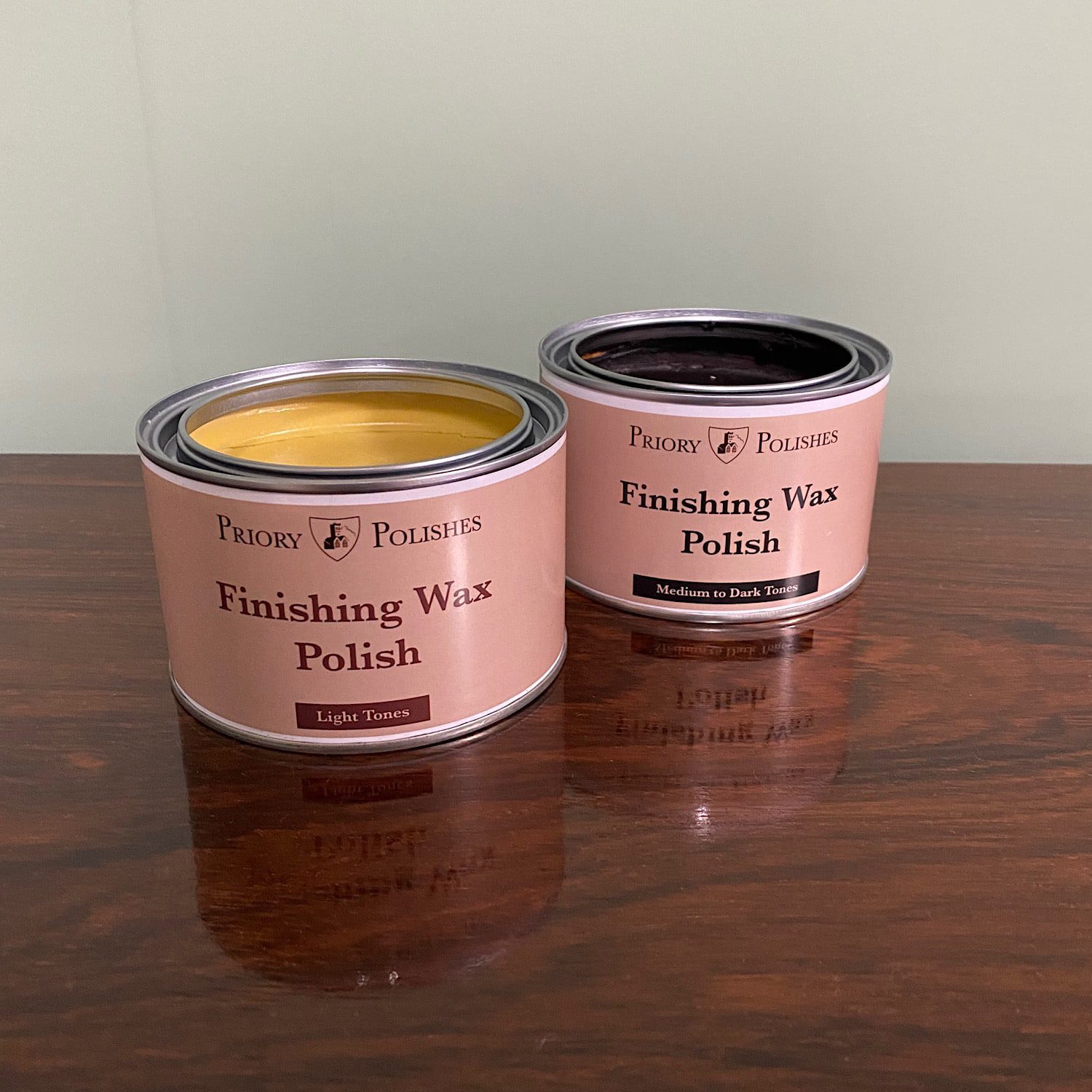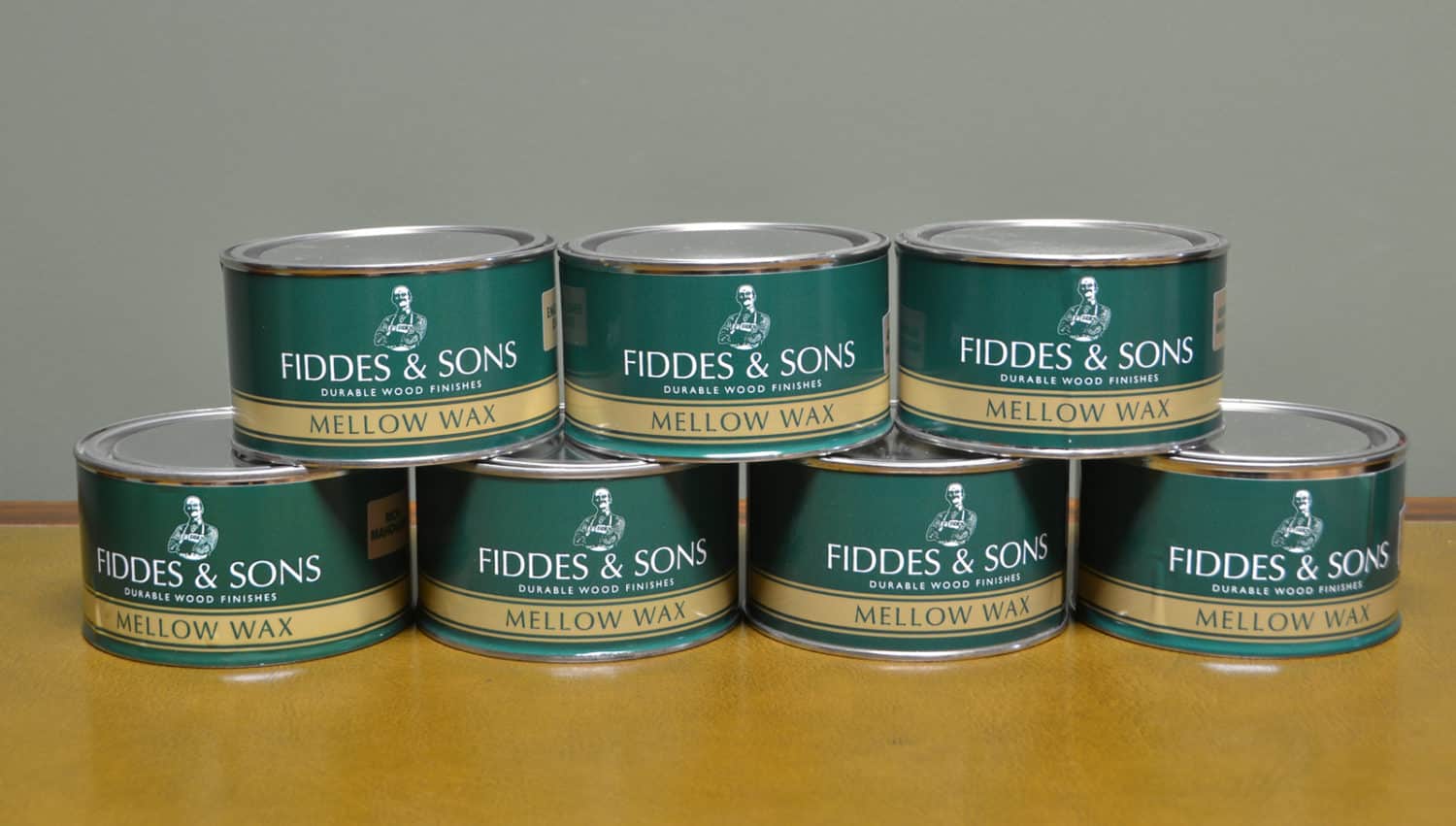Below is our guide how to care and look after your antique furniture correctly. We highly recommend you study this carefully to fully understand the correct conditions to preserve and protect your pieces so you can pass them down to your future generations in the best possible condition.
The patina on the surface of antique furniture builds up over many years (sometimes it takes hundreds of years) and even with old marks and damage; it is part of the character and charm, so adds to the value of a piece of furniture and should be preserved at all costs.
Waxing antique furniture
Waxing antique furniture with a good quality natural beeswax (not modern spray polishes as these can damage the surface over time), is the best way to protect the original finish as this brings out the colour and grain of the wood and provides protection. If the surface is very dirty, try reviving the finish first (Please see Helpful Tips on our article Here) Put a small amount of bees wax polish on a soft clean lint free cloth and rub the piece in the direction of the grain until the wax on the surface shines. This will burnish the surface and evaporate any solvent and clean the original finish in the process. If possible apply the wax at night and allow it to nourish the wood over night and polish in the following morning. If the wood has become very dry, the wax will soak in rapidly and so should be applied several times until a good patina has developed. For dry wood we would recommend to use liquid wax as this will absorb into the timber better. Antique furniture should be waxed on a regular basis as the wax feed, protects and nourishes the wood. Frequent dusting is important between waxing, using a clean, dry, soft duster. This will encourage a hard wax skin to form which enhances the patina and protect the surface further.

Brass mounts and handles should not be polished with metal cleaners as this will damage the wood that surrounds them and will also take away the character built up over years. A light waxing using very fine wire wool (0000 grade) will gently clean if needed. Regular dusting should be enough to keep them bright but not over shiny. The gold finish on ormolu or gilded bronze (often seen on antique furniture) is very delicate and should not be polished too vigorously. It should be handled as little as possible, as the acid in fingertips can damage gilding, but it is best to be dusted gently a soft brush and can be cleaned using wax if done very carefully.
Upholstery on antique chairs should be vacuumed regularly to guard against a build-up of dust and pests and if stubborn hairs are in the fabric use cello tape to lift them off the upholstery, then vacuum (this can work wonders).
Environmental Conditions That Can Affect Your Antique Furniture.
Many things can affect the condition of antique furniture including some things you may not think off. Sunlight and humidity as well as central heating and pollutants in the air can affect organic materials like wood, fabric and leather used in the construction of antique furniture. It essential to think about the environment in which furniture is kept and it is always best to check your pieces every few weeks to ensure it is not being damaged in any way.
Do not to keep fine antique furniture in strong sunlight as this will fade its colour and if sun light is only covering part of the piece it can make an uneven colour, so completely ruining the item. The heat from sunlight can also crack furniture and lift veneers off of pieces. Roller sun blinds or voile’s cut out rays of the sun without darkening a room, or curtains can be drawn on very bright day or when the room is not being used. You can also find a special window film that does not take away the light but stops the harmful rays.
Fluctuations in temperature and humidity can damage furniture also, especially on inlaid or veneered furniture. Central heating dries the air and dries the wood, so the moisture needs replacing in a room. Humidifiers can be easily bought, from simple clip on radiator models to sophisticated electric models. The other alternative would be to place small cups of water under or near pieces of furniture. Damp rooms can also cause problems which can be avoided by using an electric dehumidifier. The ideal humidity level is around 50 to 55 per cent and this can be checked with humidity indicator cards, or a garden hygrometer. The room temperature should be kept as constant as possible, with central heating left on low at night so it does not go too cold. Rooms should be kept well ventilated and not too stuffy. If in spite of all precautions being taken and your furniture starts to warp or split, do catch the problem early and contact a professional restorer immediately for advice as if left too long it can end up being very expensive and sometimes irreversible.
Moving and Handling Antique Furniture With Care
Antique furniture should be treated with care and respect. One of the first and most basic rules of handling antique furniture is being very careful. This may seem like a very simple rule to follow, but you will be surprised how many pieces get damaged from rough handling.
Moving furniture can be very strenuous so it is always best to have two people to move a piece rather than to drag the item around as this can chip the base. Use glides under furniture and this will protect the base. Never tilt back on antique chair back legs as this can damage the joints and make the chair wobbly. Over time the chair will become unusable and will need repair, sometimes this can also break the backs of the chairs making them loose all their value. Chairs should always be picked up from under the seat and never the top of the chair rail as it is liable to pull off, or loosen the dowels or joints.
Do not lift a table from the top surface but from the lowest part of the main frame or the legs as the tops are usually screwed in, and the weight of the top can pull the screws out of the base (this can cause a real mess to the wood and make fixing very difficult).
Always open a drawer using both handles, never only use one handle as this will open the drawer on an angle and can damage the runners and joints.
Restoration of Antique Furniture
If your item of antique furniture needs some restoration then we always recommend sympathetic restoration and still to keep the item as original as possible. However, it should only be done by a reputable professional antiques restorer who will use the correct traditional materials and not the modern day techniques like spay finishes. If your veneer is chipped or lifted off the furniture you should have it repaired quickly as it is easy to lose small pieces of veneer and then it is very hard to find matching veneers in the same wood. Water soluble wood glue should be used for minor repairs undertaken at home rather than superglue. Small chips of wood, veneer etc. can be held in place with masking tape (not cello-tape as this can damage the finish) while glue is setting or prior to professional restoration. Drawers and doors which stick can be eased by rubbing candle wax on the sides or even by using a soft polishing wax if a candle is not available. Dry, cracked leather on antique desk tops can be revitalised with beeswax or a leather wax but it is always best to spot test a small area first to ensure it does not stain or look odd to the rest of the surface. Clear neutral shoe cream or leather cream can also be used on desk leathers as they come ready coloured.
It is always best not to strip the old original finish, but instead try to revive the original finish by waxing. French polishing can also be used to revive polished surfaced but this should not be attempted by an amateur, only a professional can do this.

If you need more advice then you can contact us direct as we have a selection of restoration products available or if you want to buy quality antiques ready restored then here at Driscolls Antiques Ltd on antiques world, we beautifully restore all our furniture and deliver them into your house using a two man fully insured professional delivery team who will carefully handle and assemble your antique furniture.
